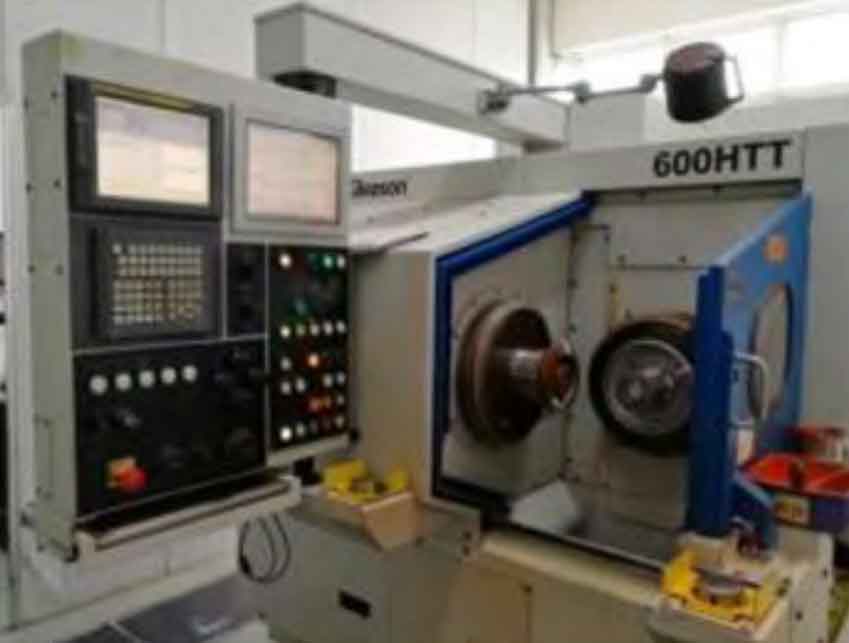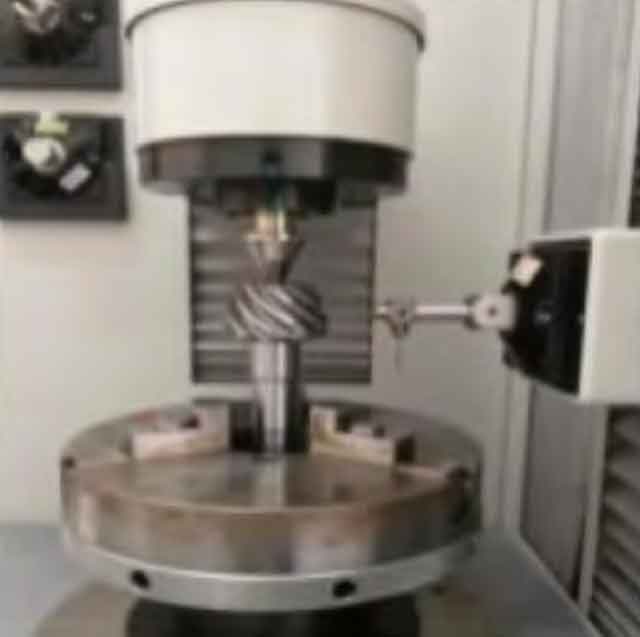1. Test purpose
In order to more clearly understand the influence of the relative helix angle error of the driving and driven teeth on the contact area offset after heat treatment of hypoid gear and verify the contact area offset principle after heat treatment, the contact area position under different relative helix angle errors is obtained through experiments, the contact area offset principle is verified, and the helix angle error range meeting the requirements of the standard contact area after heat treatment is obtained.
2. Test equipment
Gleason 600htt rolling inspection machine is a CNC rolling inspection machine developed by Gleason company for Hypoid gear pairs, as shown in Figure 1 (a). Install the hypoid gear to be paired and tested brushed with red lead colorant, and roll the paired hypoid gear to obtain the meshing contact area of hypoid gear. The standard contact area studied in this paper is oval and located at the middle to small end. It accounts for about 30% ~ 50% along the tooth rectangle and 40% ~ 60% along the tooth height.
Gleason 350gmm inspection machine is used to detect the tooth surface error parameters of hypoid gear, as shown in Figure 1 (b). The detection system automatically completes the mesh discretization of the tooth surface detection area through the 3D probe, compares the measured point coordinates of the actual hypoid gear tooth surface obtained by scanning with the theoretical tooth surface coordinates, and can calculate the tooth surface error parameters such as pressure angle and screw rotation angle error through error compensation, data processing and surface matching reconstruction.
3. Test results and analysis
Select one hypoid gear main tooth with convex helix angle error of about – 2 ‘after heat treatment, and take three tested teeth with concave helix angle error of about – 6’, – 7 ‘and – 8’ in the same batch for paired roll inspection test on 600htt roll inspection machine. Carry out rolling pairing for 8 s under the preset rolling inspection parameters (5 N ∙ m loading torque, 0.1 mm lateral clearance and 200 R / min speed), take photos and record the contact area of the tooth concave surface obtained after rolling inspection, and obtain three groups of data. The results are shown in Fig. 2. The specific change trend of the contact area of the tooth concave surface.
Based on the analysis of this batch of hypoid gears and the test results, it can be seen that:
① Three groups of hypoid gears were observed to have different contact areas between the tested teeth and the main teeth. The first group was about – 2 ‘main teeth and about – 6’ tested teeth, and the position of the contact area was smaller than the middle end; The second and third groups of hypoid gears are about – 2 ‘main teeth and about – 7’ and – 8 ‘tested teeth, and the position of the contact area is offset towards the small end.
② The relative helix angle error of the driving and driven teeth in the three groups of hypoid gear tests increases from about 4 ‘to 6’, and the contact area is closer to the small end with the increase of the relative helix angle error, which also verifies the correctness of the principle of the relative helix angle error on the offset of the contact area after heat treatment.
③ If the helix angle error of the tooth concave surface of the hypoid gear after heat treatment can be controlled within – 6 ‘, it can ensure that the position of the contact area of the hypoid gear after heat treatment gradually approaches the middle and small end, so as to control the quality of the contact area.



